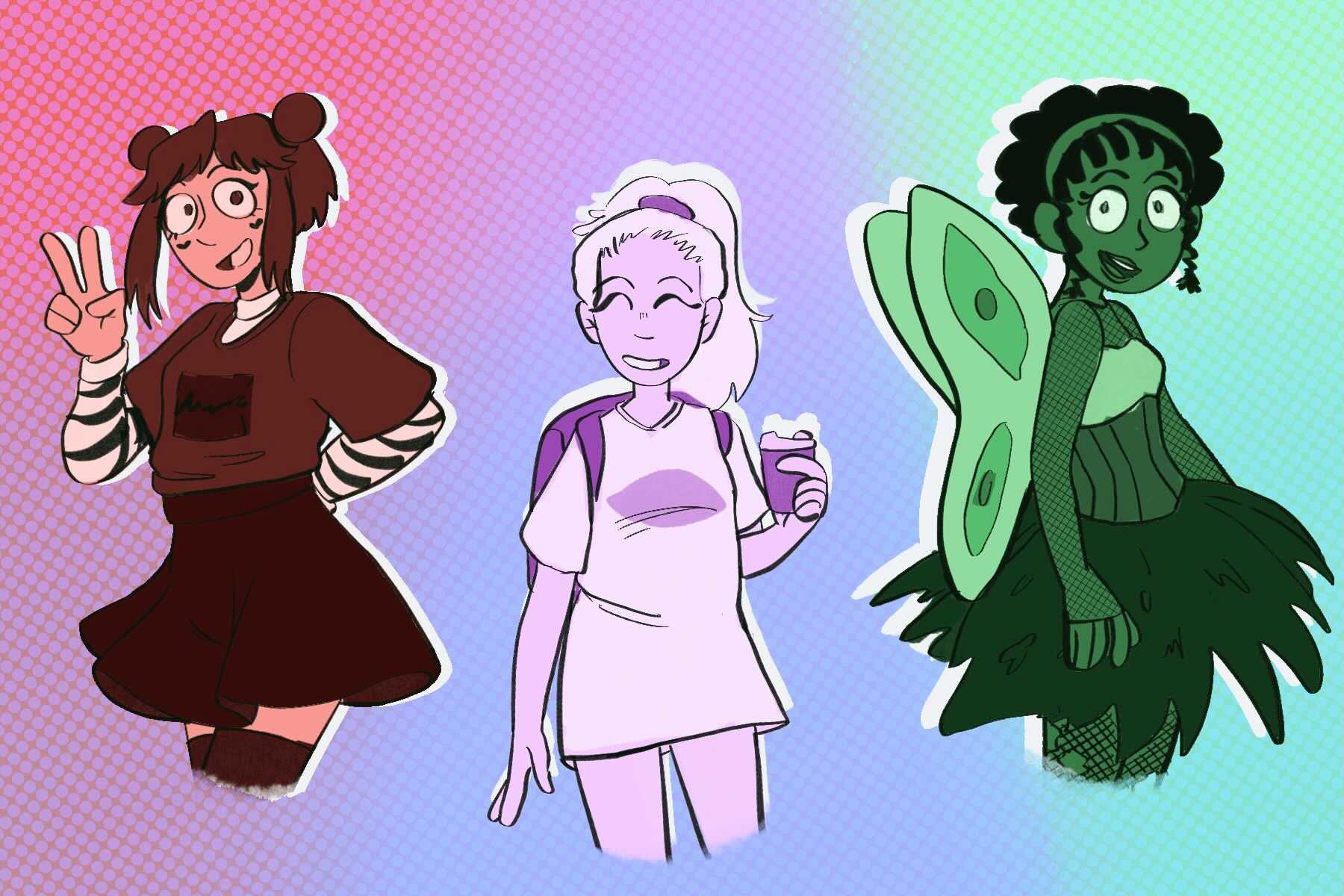Humans have always used their physical appearance as a form of self-expression. Often a person reveals so much about their background and personality, just by how they dress themselves — the colors they decide to wear might correlate with their mood, a T-shirt might indicate the music they listen to, and the level of effort they invest in small details might suggest how much confidence they armed themselves with while getting ready.
In the early 2010s, the scene kids dominated fashion. By the middle of the decade, it was the Tumblr girl. Just a few years ago, it was the e-girl and VSCO girl. Now style categories range widely, from “that girl” to “fairy grunge” to “dark academia.” Each embodies a different persona, and many come with attitudes attached. With most of their childhoods spent online, Gen Z is accustomed to most of their life being seen, liked and shared by their peers — and it shows when they get ready in the morning.
When I was 13 or so, I vividly remember searching “how to be a Tumblr girl” on YouTube. I’m pretty sure I took actual, handwritten notes. To me, Tumblr girls embodied the effortlessly indie, cool-girl persona I wanted to be. They listened to good music, wore band tees religiously (which my wardrobe was full of), and their eyeliner was always flawless. So, when I see TikTok videos pop up on my feed with captions like “how to be a coquette girl,” “bella swan core” or “dark academia aesthetic,” I get it. There’s power in dressing in what makes you feel confident and discovering a community of like-minded people. But it feels as if these subcultures are becoming more niche by the second — is this a byproduct of a constant internet connection, a booming fast-fashion industry, or a revolving door of beauty standards?
It seems like all of the above. Take the “that girl” or “clean girl” aesthetic — labels that Gen Z seems to use interchangeably to describe the same aesthetic of slicked-back buns, minimal makeup, matching activewear sets and the 5-minute journal. Some argue this persona is merely a tool to foster a mindset for self-improvement, while others claim it’s a result of a hustle culture that is limited to thin, fair, upper-class white women, excluding others who don’t fit that very specific mold. Walking in the footsteps of “that girl” could promote a healthy, balanced lifestyle for Gen Z, but it could also encourage body dysmorphia or eating disorders.
I also fell down the aesthetic rabbit hole of the “coquette girl.” Coquette girls, according to Alyssa Lyanne on YouTube, are “the new indie girls” for Gen Z. The coquette or nymphet style is characterized by 1950s Americana, tying your hair in ribbons, red lipstick and Lana Del Rey albums. Some people criticize this aesthetic for taking heavy inspiration from Vladimir Nabokov’s “Lolita,” a work that is deeply problematic in and of itself.
Niche aesthetics with specific styles such as these are a gold mine for the fast fashion industry. According to Shein CMO Molly Miao, the company updates its website and adds between 700 and 1,000 new items daily. But some TikTok users seem to pick and choose the aspects of this aesthetic that resonate with them, with one video titled “tips to be a coquette girl” instructing viewers to “be kind-hearted and don’t speak ill of others,” “have a hunger for knowledge” and “take care of your health physically and mentally.”
“Dark academia” appears to be tied to a rise in online schooling and the popularity of brooding fantasy novels. There is something romantic about getting whisked away into a fictional land, studying and reading by candlelight and dressing in soft sweaters and warm neutrals. A New York Times article describes the aesthetic as androgynous, with classic pieces including tweed blazers and black turtlenecks. It doesn’t come without criticism, though. Some argue that dark academia is elitist and reinforces the idea that “Eurocentric literature and languages are superior to any other literature or language.”
The more I delve into the dozens of aesthetic labels I’ve seen online, the deeper their problems seem to go. Is this just the nature of the internet? Is any aesthetic safe? When I take off those rose-tinted, heart-shaped sunglasses, the Tumblr girl era wasn’t innocent either — it romanticized depression and anxiety, encouraged people to stay holed up in their bedroom for the aesthetic, and fostered the virality of thigh gaps and pro-ana blogs.
Ultimately, Gen Z is a generation that is chronically online. They’ve spent most of their lives with multiple social media accounts and are used to everything they do being broadcasted to their peers. They are now deeply aware of the impact of cancel culture and its ability to easily slam down the “problematic” hammer. They read the comments and check the sources. They’re engaged with environmental issues and politics and want to make the most sustainable choices they can afford.
What I love about Gen Z is their bravery in dressing exactly how they like to project the energy that they want to embody. This might change from day to day, or with the season, but choices in style are a way to control the narrative of how the world perceives them. Gen Z doesn’t just build a look; they build who they want to be (or pretend to be) that day. Just like the Tumblr-girl cool I chased, Gen Z puts together outfits to play a character — the one who loves to read in a dimly-lit room, the one who gets up early to go running, the one who embraces hyper-femininity, the one who embraces androgyny. Fast fashion certainly plays a role, but Gen Z isn’t afraid to speak up to brands and demand better corporate social responsibility and sustainability practices.
Articles on the phenomenon of Gen Z aesthetics all seem to agree — regardless of the wide-reaching net of cancel culture and controversy, the bottom line is always confidence and community. Every morning, Gen Z arms themselves to take the world head-on. One high school junior wrote, “All around me, students model flowing dresses, ripped jeans, fishnet leggings, winged eyeliner, frilly skirts, platform boots, oversized band shirts, printed crop tops and elaborate collections of jewelry that collide and clink as they stride towards their next class.” From an elder Gen Z to a younger Gen Z: I think you are so cool.

















